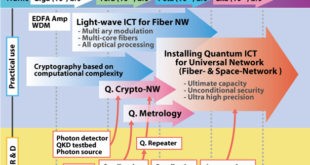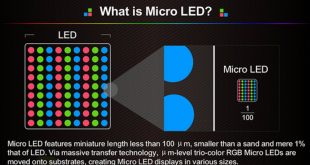Introduction:
In the dynamic realm of photonics, where the manipulation of light drives technological innovation, a revolutionary force is emerging – 3D printing. This cutting-edge technology, already a catalyst in diverse industries, is set to reshape the landscape of photonics by transforming how we design, manufacture, and utilize photonic devices.
Why 3D Printing in Photonics?
In the world of photonics, where the speed of light meets the precision of design, the potential applications are boundless.
Traditional methods of crafting photonic components involve intricate and costly processes such as carving, etching, and polishing. 3D printing presents a paradigm shift with its array of benefits.
- Design Freedom: Embrace complex geometries and intricate features previously impossible with traditional methods, allowing for unprecedented creativity in design.
- Rapid Prototyping: Accelerate the development cycle by quickly iterating on designs, reducing both time and costs associated with the prototyping phase.
- Customization: Fabricate devices directly at the point of use, tailoring them to specific applications and needs with unparalleled precision.
- Material Versatility: Explore a wide range of materials, tailoring their properties for specific wavelengths and functionalities, offering versatility not achievable through traditional manufacturing.
From intricate micro-optics to complex photonic circuits, the versatility offered by 3D printing transcends the limitations of traditional manufacturing methods. The ability to swiftly prototype, customize at the point of use, and explore a myriad of materials ushers in a new era of creativity and efficiency.
Applications that Shine Bright
The potential applications of 3D-printed photonics are vast, with exciting possibilities in various fields:
- Biomedical Devices: Print personalized microfluidic chips for on-chip diagnostics, miniaturized lab-on-a-chip devices for point-of-care testing, and biocompatible implants with photonic functionalities.
- Telecommunications: Create complex optical components for fiber optic networks, efficient modulators for data transmission, and customized lenses for beam shaping and manipulation.
- Augmented Reality (AR) and Virtual Reality (VR): Print customized waveguides and diffractive elements for lightweight, high-resolution AR/VR displays, and holographic projections.
From Imagination to Reality: Printing the Light Fantastic
Several 3D printing techniques are making significant strides in the field of photonics:
- Two-Photon Polymerization (2PP): This high-precision technique sculpts light-sensitive resins with a focused laser, creating nanoscale features ideal for micro-optics and integrated photonic circuits.
- Stereolithography (SLA): Utilizing a UV laser to solidify liquid resin layer by layer, SLA enables the creation of larger and more complex photonic structures, including lenses and waveguides.
- Direct Laser Writing (DLW): Similar to 2PP but using a continuous laser beam, DLW directly writes patterns on light-sensitive materials, offering faster printing speeds for specific applications.
Latest Breakthroughs: Shining Brightly into Tomorrow
The union of 3D printing and photonics is witnessing continual breakthroughs, pushing the boundaries of what’s possible:
These breakthroughs provide a glimpse into the dazzling future of 3D printing in photonics. As research continues, transformative technologies will emerge, from personalized medical devices to next-generation telecommunications infrastructure, paving the way for a future powered by the brilliance of light.
Low-Temp 3D Printing Process Uses UV Light to Make Multipurpose Glass
In a groundbreaking advancement, researchers at the Georgia Institute of Technology have pioneered a low-temperature 3D printing technique using deep ultraviolet (DUV) light to fabricate glass microstructures. Departing from conventional methods that demand high temperatures and extensive resources, the team utilized a photosensitive polydimethylsiloxane (PDMS) resin ink, shaping microstructures through two-photon polymerization (2PP), and subsequently converting them into silica glass with a DUV lamp in an ozone environment. The resulting transparent silica glass exhibited smooth surfaces akin to commercial fused silica glass, with a maximum processing temperature of 220 °C and a rapid completion time of under 5 hours for microscale structures. This innovative approach, the first photochemistry-based method for 3D-printing silica glass microstructures, not only presents energy efficiency but also introduces possibilities for fabricating glass structures at a fraction of the conventional sintering temperatures.
The versatility of this low-temperature 3D printing process extends beyond glass microstructures, potentially revolutionizing microelectronics. With the capability to print directly onto microelectronics at a low temperature of 200 °C, the technique addresses a critical limitation posed by the high temperatures typically associated with semiconductor materials. In contrast to existing glass 3D printing methods that may take over 12 hours and require energy-intensive processes exceeding 1100 °C, the Georgia Tech team’s approach opens avenues for efficient and resource-saving fabrication. As the researchers explore scaling up glass structures for millimeter-scale printing, this pioneering method showcases the prospect of producing ceramics under mild conditions, pushing the boundaries of additive manufacturing and heralding a new era in 3D-printed glass technology.
Conclusion
As we stand at the intersection of photonics and 3D printing, the fusion of these two transformative technologies illuminates a path towards a future where the manipulation of light takes center stage. The marriage of 3D printing and photonics is not merely about crafting components faster or more cost-effectively; it represents a paradigm shift, unlocking unprecedented avenues for innovation, design, and application.
While 3D printing in photonics is in its early stages, the potential is undeniable. Beyond simply speeding up processes, this technology unlocks entirely new possibilities for manipulating and utilizing light. As research progresses and materials and techniques evolve, we can anticipate groundbreaking applications that change how we interact with light, illuminating a brighter future for photonics.
References and Resources also include:
https://www.photonics.com/Articles/Low-Temp_3D_Printing_Process_Uses_UV_Light_to/a69404
 International Defense Security & Technology Your trusted Source for News, Research and Analysis
International Defense Security & Technology Your trusted Source for News, Research and Analysis

